My top ten games of 2021 represents two distinct halves of my gaming life – quarantined and not-quarantined. While 2020 was almost entire solo games in my top ten, this year features a number of highly interactive games of varying complexity and player counts, depending on when they were played. With four months of in-person gaming in late spring and early summer, and with my children getting old enough to join in on heavier family fare, even being stuck inside eight months of the year didn’t stop me from enjoying a wide range of incredible games this year. Let’s take a look.
10. Furnace
Furnace is the newest game from Ivan Lashin, designer of Smartphone, Inc., one of my favorite games of the last five years. As a result, I was highly anticipating this and ordered it as soon as possible. While out of print for the next few months, Furnace will come back and is most likely to stand the test of time and move up in the rankings, especially with future expansions.
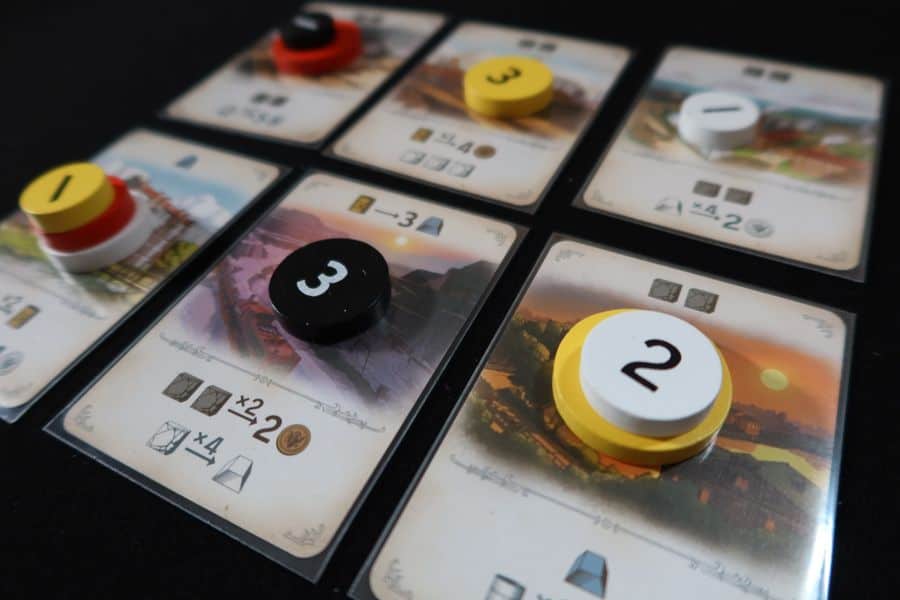
The game is elegant in its simplicity. Each round, players will bid between 1-4 for a tableau of cards in the market. Each bid can only be used once and when all discs are placed, the cards are distributed. Losing a bid isn’t all bad, though. In fact, sometimes, it’s the best possible outcome as each card has an action that activates for those who didn’t win the card. Those who do win get to keep the card and activate it during the actions phase. The resulting engine becomes sprawling by the fourth and final round, providing a brain burning exercise in maximizing performance by running each factory in the right order.
The game boils down everything I love about economic engine builders to a 45 minute sprint that is nonetheless just as satisfying and rewarding.
9. Corrosion
If Furnace is a boiled down sprint through factory building euros, Corrosion is the logical conclusion to the genre—expanding on it by introducing the idea of “rust”. Machines that are built throughout the game rust and eventually corrode, making each element you add to your factory temporary (except for the elusive chrome machines). Points are scored throughout the game, but most will come at the end when scoring chrome machines and end game conditions.

More difficult to teach than Furnace, Corrosion nonetheless offers a similarly streamlined approach to engine building. Each engine only lasts for a few rounds, and players must carefully manage their resources in between (which also rust!) The result is a sprawling brain burner, and a wonderful solo puzzler, in which there are a limited number of turns to maximize efficiency and complete certain objectives.
8. Witchstone
I love Reiner Knizia’s games. The 64 year old wizard of board games has produced more than 600 games since 1990, many of which are all time classics. But not every game is an instant winner. Some are proof of concept, or more abstract than others. Fun, but not always memorable. Witchstone is memorable. My favorite of his games since 2017’s The Quest for El Dorado, Witchstone implements a clever tile placement and icon matching mechanism that feels more Feld than any of Knizia’s other games, and a sprawling map over which players must move their witch tokens and accomplish certain objectives.
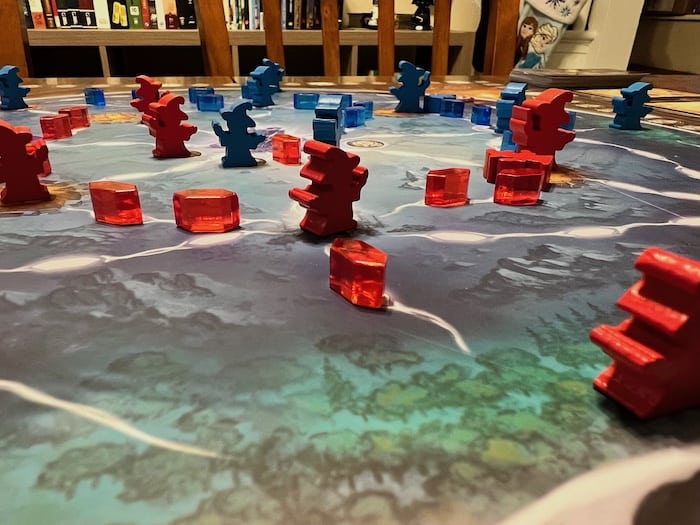
With multiple paths to victory, a borderline point-salad approach to actions, and high levels or replayability, Witchstone is a fantastic new addition to his long list of notable games. A bit heavier than the family can easily tackle, it nonetheless has the kind of unassuming rules and accessible ruleset that makes it easy to get to the table.
7. Final Girl
Sandwiched between two colorful, accessible games is one of the least accessible games on my list. Solo only. Horror-movie themed. Brutally difficult. And yet, Final Girl remixes the familiarly brutal mechanics of Hostage Negotiator to great effect, providing a grueling but rewarding experience of highly asymmetrical, unique spins on the horror genre as a whole. Each game consists of a player character (final girl) trying to defeat a horror movie villain of some sort. While not licensed, most of these villains will be familiar, with analogs for Jason, Freddy, Michael and more across the half dozen expansion boxes. The game costs a minimum of $40 to get into, half for the core box and the other half for your movie villain of choice.
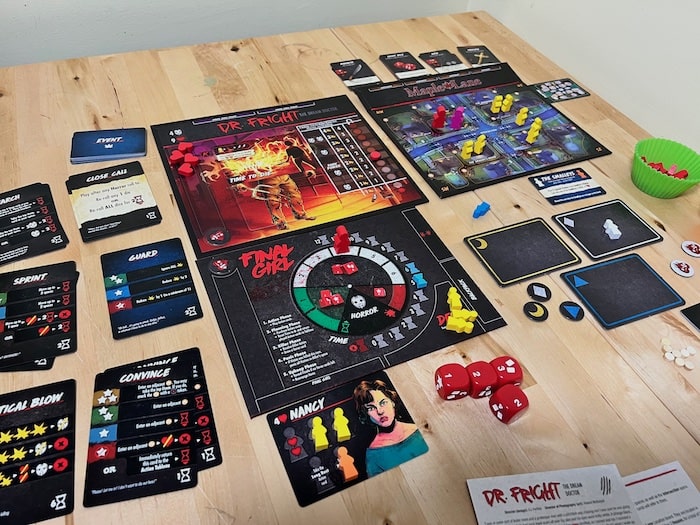
Relatively quick to play, Final Girl uses the same resource scarcity and dice mitigation mechanics that made Hostage Negotiator a smash hit to great effect. If you don’t like dice rolls, it may not be for you, but there are few solo-only games that are more thematic and carefully designed.
6. The Adventures of Robin Hood
Michael Menzel designed one of my favorite adventures games of all time, taking the often dice-based map crawlers that define so much of the hobby and building a euro-puzzle out of it in Legends of Andor. I own everything for Andor and adore it, putting in my top 100 list every year since I got the first box.
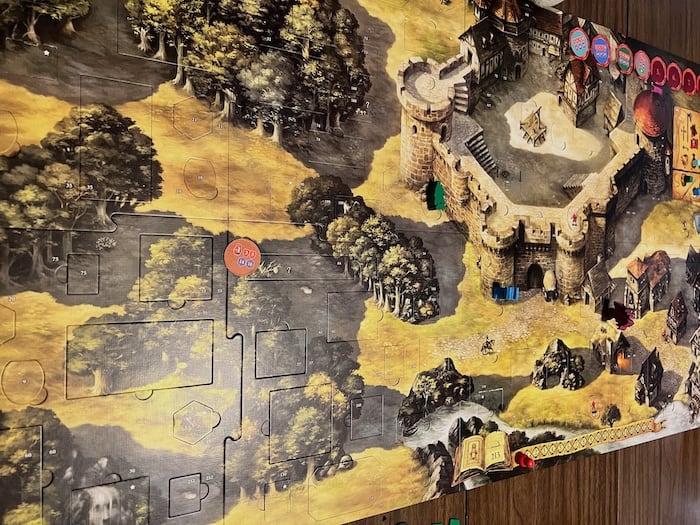
The Adventures of Robin Hood has a lot of DNA in common with the Andor games, but is very much its own game. Yes, it’s an adventure game, and there’s a big sprawling board, and there is no proper rulebook. The game unfolds around you as you play, but instead of the card-based system of Andor, Robin Hood uses a storybook that feels more like an interactive Choose Your Own Adventure than a board game proper. Very much focused on families, the brain burning efficiency puzzles are mostly gone as well, replaced with sprawling story moments, and branching paths for Robin’s band of merry men. It’s a blast to play, and it’s been so satisfying watching my children get to know these stories.
5. Mini Express
Mini Express is a cube rail game, and has a lot in common with other cube rail games. In a year in which several high profile games in the genre were released, why does Mini Express stand out? There are several reasons. First, it feels like a complete game. Where others like Ride the Rails often feel over before they really begin, Mini Express has a more satisfying game arc, and supports player counts from 1 to 5 with a carefully designed solo mode that has been a blast to play.
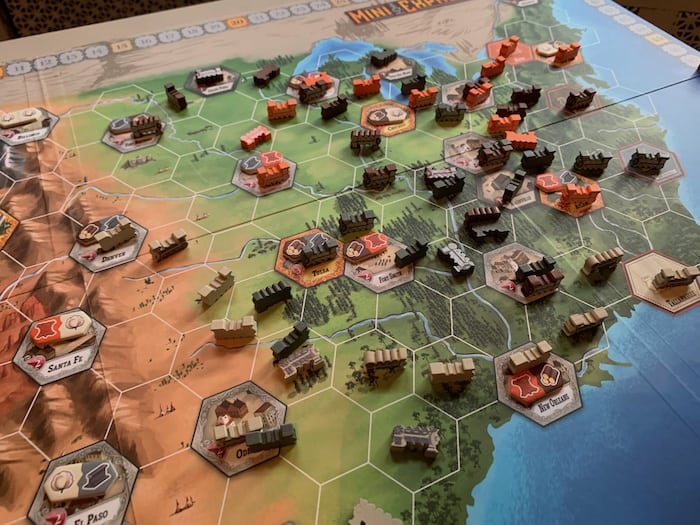
The production values are high, though, this is less of a standout in 2021 than it would have been five years ago. Capstone released a trilogy of cube rails that jump off the shelf just in the last three years. Combined with multiple maps, variable setup, a carefully designed scoring system, and the accessibility of the game—as simple for my children as it is challenging for my gamer group—Mini Express was my favorite of the most recent bunch by a mile.
4. Botanik
I don’t get a lot of two player only games to the table. Patchwork for sure, and 7 Wonders Duel, yes, but with so many on my shelf and so many of them amazing, I tend to avoid new ones unless they really jump off the shelf. Botanik does just that. Franck Dion’s surreal artwork caught my attention and the game play of Frank Crittin, Grégoire Largey, and Sébastien Pauchon kept it.
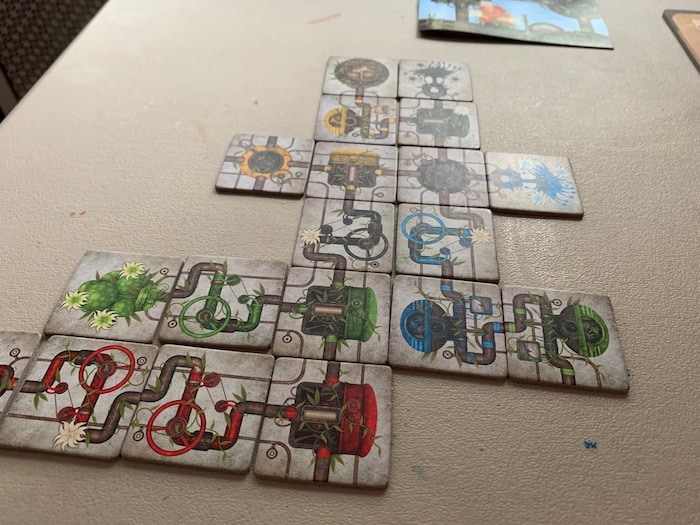
Combining tableau building, set collection and tile drafting in a unique way that works perfectly for two players, Botanik plays fast, but doesn’t feel lighter for it. This 20 minute gem asks players to think through complex patterns and maximize their points across multiple possible options at all times. It’s about as satisfying an experience as I’ve had all year playing a game.
3. Dominant Species: Marine
When Chad Jensen passed away in 2019, the board game world mourned one of the great designers of the modern era. Dominant Species is a brilliant game that has stood the test of time as one of the best examples of intense player interaction in a euro. Long rumored, Dominant Species: Marine had been announced and was in the works for years at that point, and it wasn’t clear if we would see Jensen’s vision for a more streamlined, modernized take on the formula.
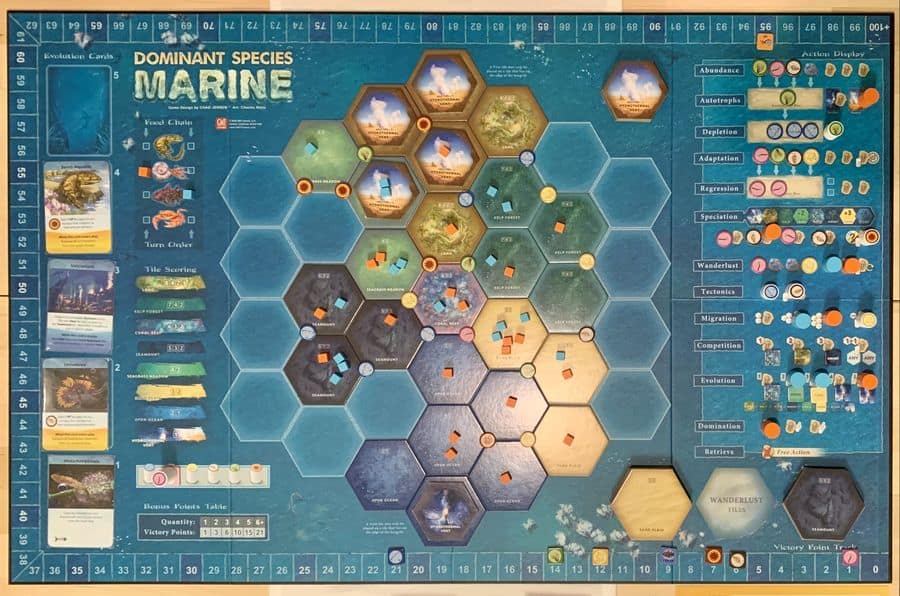
Thank goodness we did, because Dominant Species: Marine is a brilliant take on the genre. At once instantly familiar to anyone who has played Dominant Species, and yet wholly unique in many ways, introducing variable asymmetry, instant action taking, and a new card mechanic that keeps players on their toes over a much shorter play time, Dominant Species: Marine is a must play euro, and one I will keep on my shelf next to the original for years to come.
2. Coffee Traders
First announced in December of 2020, Coffee Traders is the second game from Rolf Sagel and Andre Spil, the masterminds behind the brilliantly underrated Wildcatters. Eight years between games is a long time, but thankfully Sagel and Spil still have it, crafting a sprawling economic simulation that works on almost every level.
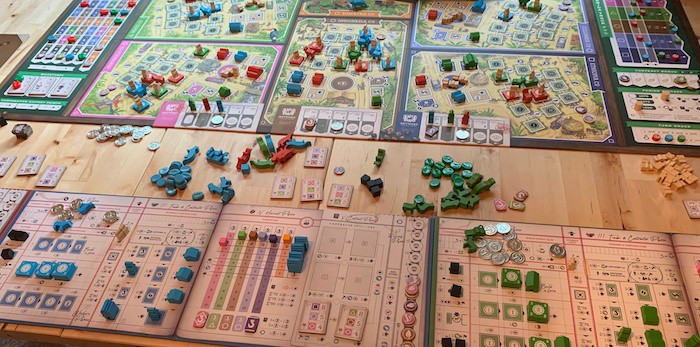
Coffee Traders is set around the globe in the 1970s when Fair Trade organizations started investing in coffee plantations and supporting the efforts of farmers to improve their living conditions. It’s competitive of course, so each player represents different organizations setting up plantations and coordinating with local workers to grow coffee, ship it back to Antwerp and sell it in the world’s biggest markets.
With hundreds of pieces, a daunting play time, and a hefty price tag, Coffee Traders is a big ask, but one that I was glad I answered and thrilled I had a chance to play this year.
1. Cascadia
It’s rare that a game so light reaches the top of my list. My top 10 is full of meaty euros for a reason. I like my games heavy. But this year, no game captured my imagination (and hit my table more often) than Cascadia. Not yet familiar with just how good Flatout Games are, I didn’t back the original Kickstarter, but I was able to snag a copy early on and have been playing nearly non-stop since it came in.
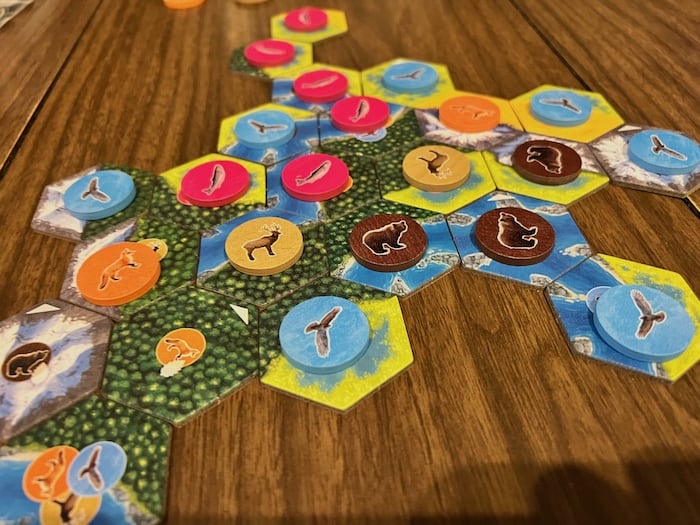
At first glance, Cascadia is simple. Players draft sets of tiles and tokens and then place them in their tableau. Each type of token represents one of the five species of the region – bears, eagles, foxes, salmon, and elk – each with its own scoring condition, which can be randomized each game. That’s it. You place your tiles and tokens and try to score the most points. The simplicity is the genius of this game, though. I can teach it to my seven year old in five minutes, or I can stay up late playing solo games trying to top my high score over and over again.
This is a game I will be playing weekly for months if not years to come, a perfect example of complexity in miniature—intense, grueling decisions made in quick twenty minute bursts. Don’t be surprised to see this high on my updated Top 100 list very soon.

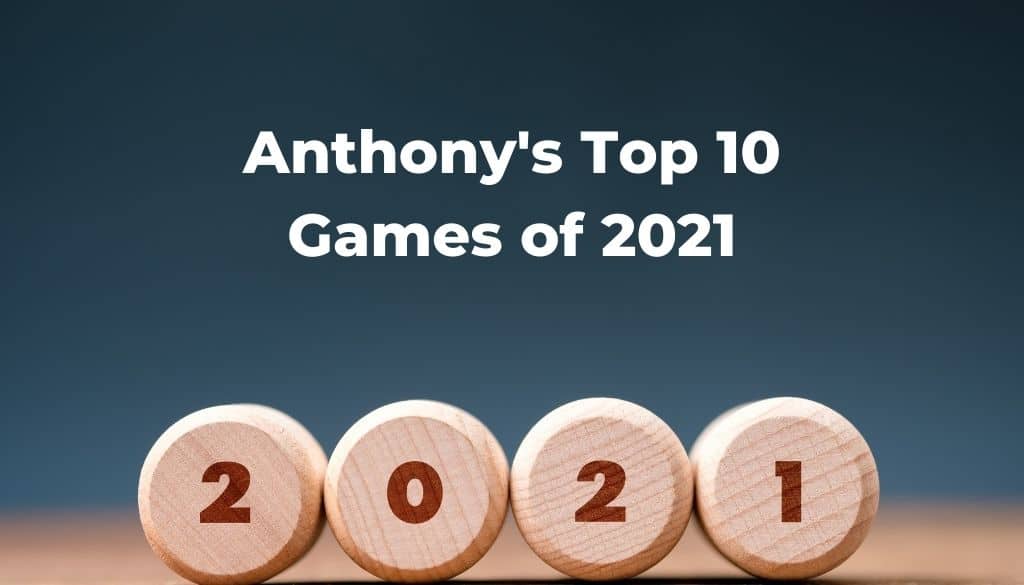



Show Comments